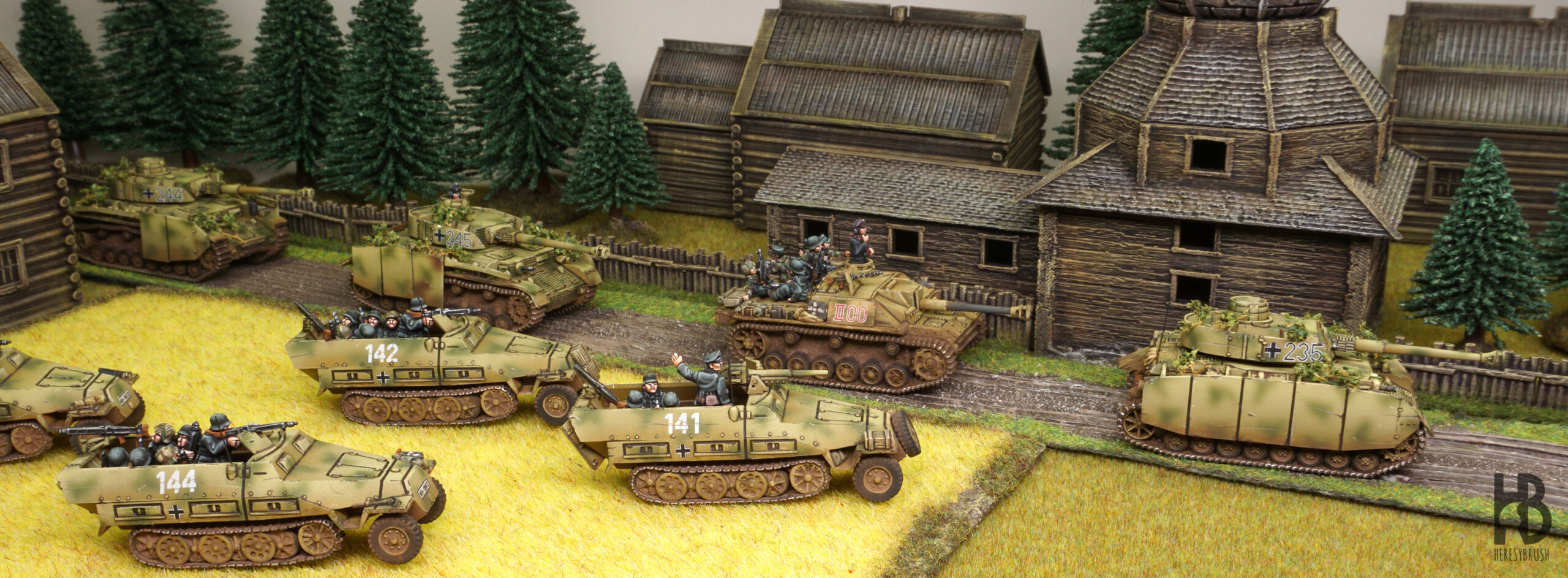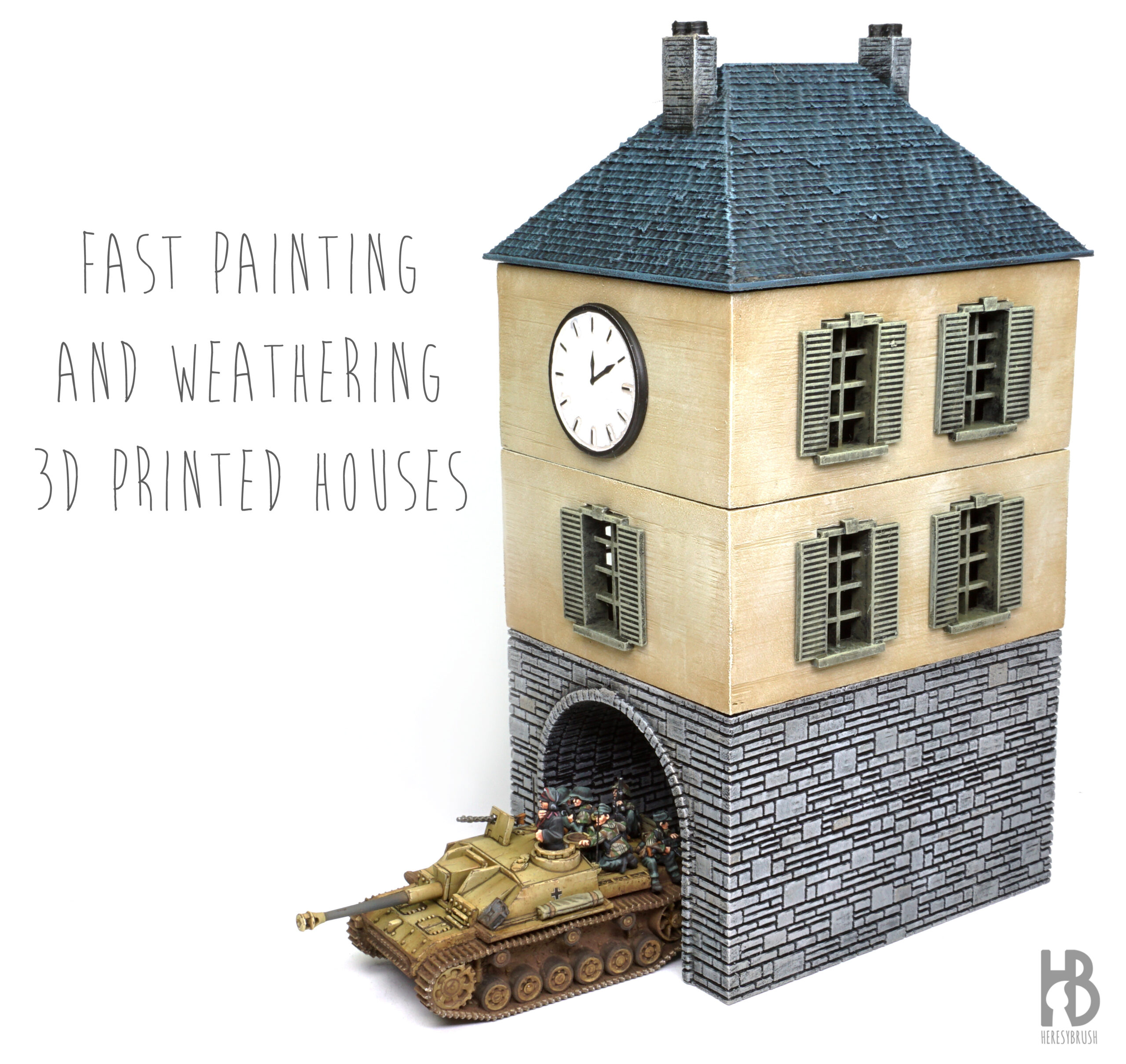This article was originally published on the Battlefront website. In previous tutorials, we explored different methods for painting camouflage on tanks using soft- or (this, for example) hard-edge patterns (this and this, for example), with or without masking. These techniques typically involved the use of an airbrush, a tool that can seem intimidating to many hobbyists. In reality, however, airbrushing is quite easy, and I highly recommend giving it a try if you have not already. The most critical aspect is cleaning the airbrush properly after each session, and always remember to thin your paints. That said, in this tutorial…
How to Paint Paper Panzers
In this article, we will explore how to create an anachronistic WWII camouflage, a “splinter camo”, commonly used by scale modelers for “what if” tanks and prototypes, such as the iconic German E series. To achieve this, we will use masking tapes to create an intricate tri-tone camouflage, where each color is carefully highlighted to create a striking contrast. This article was originally published on the Battlefront website, Part 1 and Part 2. The “What If” tanks open up endless possibilities for experimenting with color schemes and camouflage. Since these tanks never existed, the creative freedom is limitless. However, it…
How to quickly paint WWII German vehicles in 15mm
Here, I will describe the ‘speed painting’ method I started using last year to paint two full German armies for Flames of War. Speed painting is a relative term—what might be fast for me could differ for another painter. I consider this method fast because I simplified certain techniques compared to my traditional painting method, like color modulation, and omitted others entirely, such as using oils to create streaking or dust effects, which saved a lot of time. For this project, we will be using either the ATOM acrylic paints or the new IONIC acrylic paints for WWII German Tanks,…
How to paint 3D-printed buildings
In this tutorial, we will explore fast and simple techniques for painting 3D-printed houses made from filament, perfect for wargaming. Although we are going to paint a 15mm house for Flames of War, the same techniques can be applied to any theme and scale. The idea is to take advantage of colored primer cans for the base colors, and then create contrast using dry brushing and filters. Step 1 – Preparation Filament printers are an amazing tool for creating scenery elements for wargames with ease. However, the inevitable downside of this type of printing is the resulting linear texture. To…
Painting the WWI German AV7 tank: the art of enamel washes
This tutorial was originally published on the Battlefront website, here. Acrylic paints are the most popular choice for wargamers, and in most cases, the only option on the painting bench. This preference is quite logical, as acrylic paints are readily available, non-toxic, quick-drying, and overall user-friendly. However, if we take a closer look at what Scale Modelers do, we will discover that they employ a variety of paint types, including acrylics, lacquers, oils, enamels, and powder pigments. The distinct features of each type of paint can be utilized to perform specific steps or achieve particular effects. Therefore, having a understanding…
How to create mud bases
This article was originally published on the Battlefront website: here. As wargamers, we frequently opt to paint bases rather than create them. While it is true that we usually incorporate some form of texture, often achieved by adhering sand with glue, the subsequent step typically involves multiple layers of drybrushing painting. However, for the sake of achieving more authentic bases and scenery, it is advisable to create the texture entirely instead of relying on painting. A notable example is mud; painting mud effects can be quite challenging, while creating realistic mud effects becomes remarkably straightforward when employing the right tools…
How to create urban rubble bases
In a couple of weeks, I will be attending the Flames of War National tournament in Finland (Talvisota 2024), for which I have spent the last few months assembling a new German army. Given that the theme of the army is Berlin, 1945, I wanted to craft something unique for the bases of the infantry and Flak 88 guns. In this tutorial, I will demonstrate how to create urban bases with debris in a straightforward, efficient, and effective manner. While this tutorial primarily targets 15mm miniatures (Battlefront), its principles are adaptable to other scales or projects with the simple adjustment…
How to create autumn-themed bases
It has been a bit since my last blog post, but that does not mean I have forgotten about it. I am working on some neat stuff that I hope will be ready to share soon. In the meantime, I have put together a short and simple article explaining how we can create bases using simple materials while still achieving very realistic results. The trick is to utilize natural elements, such as soil and small branches. We save time because we do not need to paint them, plus they look precisely how they are supposed to on our tiny models.…
Improving a 15mm paint job: guns and crew
Most popular painting techniques for wargames fall in the category of fast painting methods that aim for the so-called “tabletop quality”. The idea is to have ready a unit or an army as soon as possible, with each miniature painted with the right colors and a bit of contrast between shades and highlights. These quick methods are perfect for wargamers since they do not require much time, allowing the players to spend more time in the battlefield. But, sometimes we have some extra time that we can use to push forward the quality of our miniatures for wargames. I would…
How to paint armed civilians in WWII
As I already commented in my previous post, I had the great opportunity to paint the wonderful new 28mm range from JT Infamous featuring the WWII Polish Home Army and perfect for Bolt Action.We already saw how to paint step by step the armoured truck Kubuś, and today we will see how to paint the soldiers (or civilians). Thanks to JT Infamous and Wargames: Soldiers and Strategy you can download for free two detailed step by step painting guides showing how to paint a Civilian armed with a Molotov cocktail and SMG (originally published in WSS 101) and another civilian dressed with stolen…









